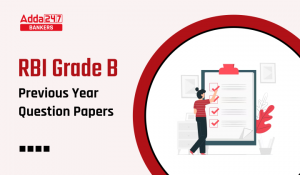Twelve persons are sitting in two parallel rows containing six persons each in such a way that there is an equal distance between adjacent persons. In the Row-1 P, Q, R, S, T and U are sitting and all of them are facing towards north direction . In the Row-2 , A, B, C, D, E and F are sitting and all of them are facing towards south direction . In the given seating arrangement each member sitting in a row faces another member of the other row.
C sits second from any of the end of the row. Two persons sit between C and F. One of immediate neighbour of F faces T. Two persons sit between T and Q. P sits third to right of U. P does not sit adjacent to T. One of immediate neighbour of U faces A. A does not sit any of the end of the row. C does not face P. R sits one of the position left of Q. One of immediate neighbour of R faces D. Two persons sit between D and B.
Q1. Who among the following faces A?
(a) P
(b) Q
(c) R
(d) T
(e) S
Q2. Who among the following sits third to left of S?
(a) P
(b) Q
(c) R
(d) T
(e) None of these
Q3. Who among the following sits second to the right of F?
(a) D
(b) No one.
(c) B
(d) A
(e) E
Q4. Who among following faces the person who sits third to right of C?
(a) P
(b) Q
(c) R
(d) T
(e) S
Q5. Four of the following five are alike in a certain way based on the given seating arrangement and hence form a group. Which is the one that does not belong to that group?
(a) F
(b) D
(c) A
(d) R
(e) U
Directions (6-10): Study the set of numbers given below and answer the questions which follow:
427 581 839 275 589
Q6. Which of the following numbers will be obtained if the second digit of the greatest number is subtracted from the second digit of the lowest number after adding one to each of the numbers?
(a) 1
(b) 2
(c) 3
(d) 4
(e) 5
Q7. If in each number, first and the last digits are interchanged, which of the following will be the highest number?
(a) 427
(b) 581
(c) 839
(d) 275
(e) 589
Q8. If in each number the second and the third digits are interchanged, which will be the second lowest number?
(a) 427
(b) 581
(c) 839
(d) 275
(e) 589
Q9. If one is subtracted from the last digit of each of the numbers and then the first and the third digits are interchanged, which of the following will be the lowest?
(a) 427
(b) 581
(c) 839
(d) 275
(e) 589
Q10. If in each number, all the three digits are arranged in ascending order, which of the following will be the highest number?
(a) 427
(b) 581
(c) 839
(d) 275
(e) 589
Directions (11-13): In these questions, relationship between different elements is shown in the
statements. These statements are followed by two conclusions:
(a) If only conclusion I follows.
(b) If only conclusion II follows.
(c) If either conclusion I or II follows.
(d) If neither conclusion I nor II follows.
(e) If both conclusion I and II follow.
Q11. Statements: P ≤ Q < R ≥ T > S
Conclusion:
I. P> R
II. R≥ P
Q12. Statements: P > L ≤ M < N > Q
Conclusion:
I. P > N
II. Q > L
Q13. Statement: S ≥ T = U < V ≥ X
Conclusions:
I. V > T
II. X> U
Directions (14-15): Study the following information and answer the questions given:
Sharvi walked 5m towards north from point A and reached to point B. She took a right turn from point B and walked 7m and reached to point C. She took another right turn from point C and walked 6m to reach point D. Sharvi took a right turn from point D and walked 3m to reach point E. From point E, Sharvi took another right turn and walk 6m and reached point F
Q14. What is distance between point F and B?
(a) 6m
(b) 5m
(c) 4m
(d) 3m
(e) None of the above
Q15. Point E is in which direction with respect to point to A?
(a) North
(b) South
(c) South-east
(d) South-west
(e) None of these






 GA Capsule for SBI Clerk Mains 2025, Dow...
GA Capsule for SBI Clerk Mains 2025, Dow...
 The Hindu Review October 2022: Download ...
The Hindu Review October 2022: Download ...
 RBI Grade B Previous Year Question Paper...
RBI Grade B Previous Year Question Paper...





